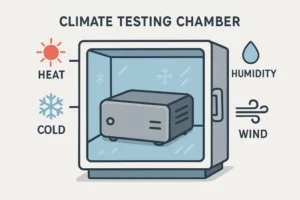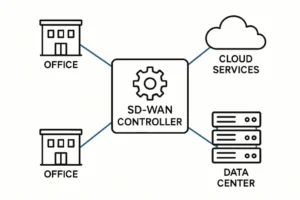Introduction
The field of esthetics is evolving rapidly, offering an exciting blend of art, science, and professionalism. Modern esthetics training programs are designed to meet the increasing demand for skilled skincare practitioners who understand fundamental techniques and advanced treatment options. Those considering a career in this industry will discover that today’s educational standards set a strong foundation for success, emphasizing practical experience, client care, and continuous personal growth. Understanding what to expect from an esthetics training program is essential for making informed decisions and preparing for a rewarding role in skincare and wellness.
Foundations of Modern Aesthetics Education
At the heart of every high-quality esthetics program lies a carefully developed educational framework that merges scientific theory with real-world application. From the very first day, students are introduced to the critical principles of skin biology, infection control, safety protocols, and the ethical standards that govern professional practice. Programs highlight the importance of sanitation, teaching rigorous procedures for sterilizing tools and maintaining a hygienic environment. Anyone enrolling in an esthetician school in Salt Lake City, UT, or any comparable modern institution can expect a curriculum that ensures proficiency with basic and advanced concepts. This early grounding is essential for developing confidence and technical accuracy as the training progresses.
Curriculum and Core Subjects
The curriculum of a modern esthetics training program is comprehensive, reflecting the expanding role of estheticians in today’s beauty and wellness sector. Central subjects include detailed studies of skin structure and function, disorders and diseases, and the principles of product chemistry. Students learn about the effects of environmental factors and lifestyle habits on skin health. Instruction covers facials, exfoliation, extractions, waxing, and hair removal, as well as how to perform these services and when to apply each technique to different client needs. Coursework often includes body treatments, advanced exfoliation like microdermabrasion or enzyme peels, and specialized masks and serums.
Equally important is product knowledge. Learners study the composition, safety, and efficacy of professional skincare products, gaining the tools to make educated recommendations based on skin types and goals. Some programs integrate elements of makeup artistry, teaching color theory and application techniques for a well-rounded foundation. The curriculum is regularly updated to reflect evolving standards, new technologies, and emergent best practices in esthetic care.
Hands-On Training and Practical Experience
Effective learning in esthetics is driven by active participation. Hands-on training forms the backbone of every reputable program, allowing students to apply classroom instruction to fundamental skills. Training environments are designed to simulate professional settings and are equipped with treatment beds, advanced skincare devices, and all necessary supplies. Guided by experienced instructors, students practice techniques repeatedly, starting with models, classmates, or mannequins and gradually moving to real clients under supervision. This practical exposure helps to build muscle memory, enhance dexterity, and foster sound judgment.
Over time, students learn to perform comprehensive client consultations, analyze skin accurately, and design customizable treatment plans. Practice sessions include facials, waxing, massage, mask and peel application, and the use of cutting-edge equipment. This immersive approach develops technical skills and the confidence required to enter the workforce as a skilled esthetician ready to care for clients ‘ unique skin needs.
Use of Technology and Modern Equipment
Integrating technology into esthetics education is a hallmark of modern programs. Students are introduced to contemporary tools such as facial steamers, ultrasonic skin scrubbers, LED light therapy devices, and microdermabrasion machines. Instructors demonstrate proper usage, maintenance, and troubleshooting, ensuring comfort with the latest advancements in the field. This exposure prepares students to deliver high-quality services in settings ranging from spas and salons to medical offices focused on cosmetic dermatology.
Digital skin analysis tools are often utilized to teach students how to assess moisture levels, sun damage, and other concerns at a microscopic level. Familiarity with analog techniques and technological equipment enables graduates to adapt easily to the demands and innovations of professional practice.
Professional Development and Client Relations
Comprehensive esthetics training extends beyond technical abilities, emphasizing the value of professional demeanor, communication, and client care. Students receive guidance in developing strong interpersonal skills, mastering consultation techniques, and managing client records confidentially and accurately. Programs prioritize ethical behavior and encourage respect for clients’ varying needs and expectations from diverse backgrounds.
In addition, it is offered in time management, workstation organization, and retail sales, the latter being an integral part of many aesthetic careers. Students are taught how to educate clients about home care and product usage, reinforcing trust and satisfaction. Networking skills, resume-building, and interview preparation are commonly included, supporting a seamless transition from graduation to employment.
Preparing for Licensure and Examination
Every aspiring esthetician must obtain a professional license before beginning independent practice. To this end, modern training programs are carefully structured to include review sessions, mock exams, and ample preparation for state examinations. Students master written material, practical demonstrations, and verbal communication skills that are tested during licensure assessments.
Instructors provide detailed feedback, helping students strengthen their knowledge, address weak areas, and develop strategies for exam day. Many programs also offer workshops focused on test-taking strategies and anxiety management, ensuring graduates are well-prepared to pass the licensure process and launch their careers with confidence.
Conclusion
A confident launch into their careers with a balanced, comprehensive journey from foundational theory to hands-on expertise and professional readiness. Students benefit from state-of-the-art facilities, informed instructors, and immersive learning experiences that foster technical competence and personal growth. By the end of training, graduates have the knowledge, experience, and credentials to provide outstanding skin care services. Whether aspiring to work in spas, salons, or clinical environments, esthetics program graduates are empowered to begin fulfilling careers and make a meaningful difference in the lives of their clients.
Also Read-Reducing and Safely Moving Heavy Furniture








